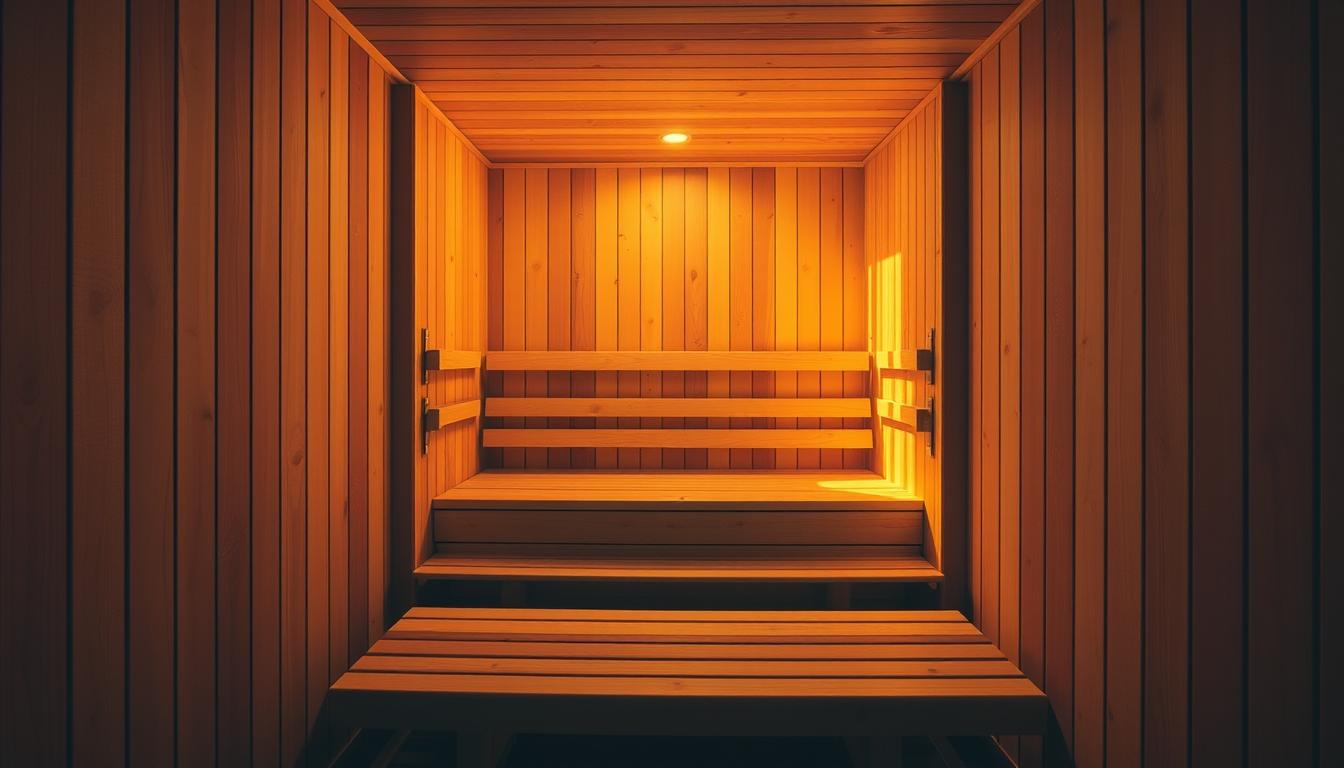
Best Full Spectrum Sauna Benefits and Features Explained
This 2025 buyer’s guide helps readers sift evidence from hype when choosing an at‑home infrared sauna. It defines what a full spectrum model means, and why buyers often compare it to far‑infrared only units.
The guide draws on expert commentary and research. Experts note infrared wavelengths penetrate tissues, so you can reap cardio‑like sweat and recovery benefits at lower operating heat. That makes sessions more comfortable for many users.
Readers will find field‑tested top picks, brands to watch, and clear notes on quality versus price. The article flags EMF, build materials, warranty, and installation needs so you can plan for electrical and room placement.
Expect short top‑pick lists plus deeper reviews. The goal is practical, evidence‑based guidance to help you choose the best home sauna for your budget, space, and wellness goals.
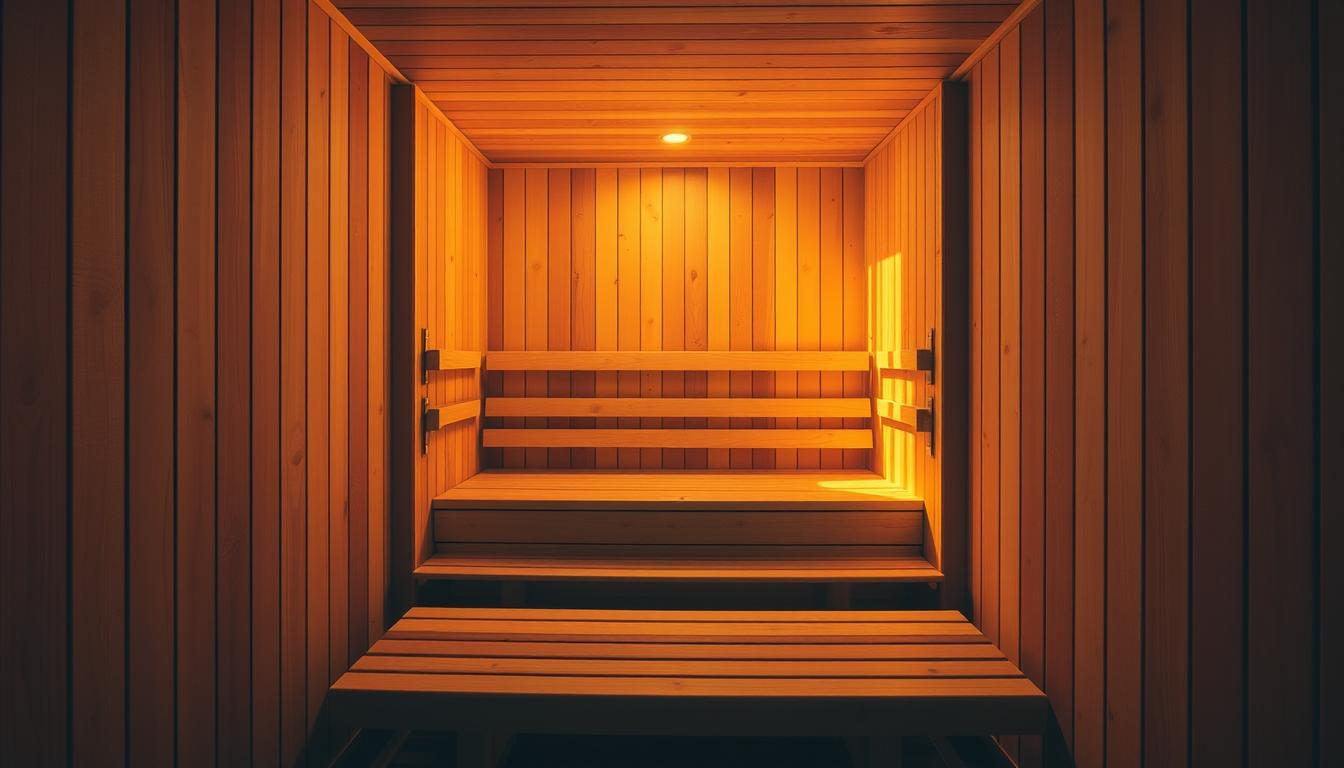
Key Takeaways
- Infrared saunas heat the body directly, so lower air temperatures can still be effective.
- Health benefits focus on recovery, circulation, mood, and pain relief backed by research and experts.
- Quality and price trade‑offs vary from blankets to cabin units; warranties matter.
- EMF, heater performance, materials, and support are core buying criteria.
- This U.S. 2025 guide includes installation notes and clear shortlists to save you time.
What “Full Spectrum” Really Means for Infrared Saunas Today
Infrared wavelengths—near, mid, and far—play distinct roles in how heat feels and acts on the body. Understanding those differences helps you decide whether a combined heater array or a far‑infrared only system fits your goals.
https://www.youtube.com/watch?v=-KA1YGSsN2c
Near, Mid, and Far Infrared: How each wavelength impacts your body
Near infrared mostly targets superficial tissues. It can feel intense at the skin and may aid circulation and skin health.
Mid infrared warms soft tissues and joints, offering comfort for sore areas.
Far infrared penetrates deeper to raise core temperature, producing the sweat and cardiovascular-like effects many users seek.
Full spectrum vs. far-infrared only: Key differences buyers should know
Combined systems emit all three wavelengths to broaden potential effects. That adds versatility if you want skin, joint, and core benefits in one unit.
Far‑infrared only units focus on deep heating and sweat. They can be perfectly adequate if your priority is core warmth and circulation.
Note that infrared saunas run cooler than traditional models (roughly 110–130°F vs. 160–200°F), yet radiant transfer makes the heat feel substantial.
- Perceived intensity varies: near IR feels stronger on the skin at moderate air temperature.
- Heater layout matters more than labels: even coverage around the body gives the most comfortable sessions.
- Research points to mitochondrial stimulation and improved circulation as mechanisms that work at lower temperature levels.
When reading sauna reviews and comparing models, prioritize warm‑up time, temperature stability, and how the system covers the torso rather than assuming all combined units perform the same.
Health Benefits Backed by Experts and Research
Clinical studies and clinician observations show infrared exposure can support circulation and recovery without extreme air temperatures. Alex King, D.O., notes infrared wavelengths penetrate tissues and may increase oxygen delivery and ATP production at the cellular level. This helps explain why users report improved energy and faster healing.

Circulation, energy, and recovery: How IR supports performance
Improved circulation, enhanced energy, and faster post-exercise recovery are commonly reported outcomes when sessions are used regularly. Athletes often use 3–4 sessions weekly, 15–30 minutes each, to aid muscle repair and reduce soreness.
Mood, stress, and contrast therapy: Pairing heat with cold plunges
Pairing heat with cold exposure can amplify mood benefits. Clinicians report that alternating brief cold plunges after infrared work can boost dopamine and endorphins, improving stress resilience and mood.
"Infrared exposure supports cellular energy and recovery while remaining comfortable for many users."
Cellular effects and mitochondria: Why lower temperatures still work
Infrared influences mitochondria to increase ATP output. That mechanism supports tissue repair without high air temperature, so people with heat sensitivity can still gain benefits.
| Outcome | Typical Cadence | Practical Note |
|---|---|---|
| Circulation & recovery | 3–4 sessions/week | 15–30 min; monitor hydration |
| Mood & stress relief | 2–4 sessions/week | Try contrast with brief cold plunge |
| Cellular energy (ATP) | Consistent use over weeks | Track sleep and recovery metrics |
Safety tips: hydrate, replace electrolytes during frequent sweat, and stop if you feel faint. Responses vary, so log outcomes and adjust frequency. For model choices, consult infrared sauna reviews and clinician guidance to match needs—athletes, desk workers, and heat-sensitive users benefit from different setups.
Core Buying Criteria: How to Choose a Quality Home Sauna
Choosing a home unit means weighing measurable performance metrics, not just marketing terms. Focus on test data, construction, and service to match the product to your goals.
EMF and ELF: Look for independent measurements showing emf at the bench under ~3 mG. Extremely low emf designs ground and shield wiring to reduce fields at user positions. Beware models that claim "low emf" but lack third‑party reports.
Heating performance
Compare warm‑up times and target heat. Premium units commonly reach 130–150°F and warm in 20–30 minutes with even coverage.
Budget cabins may hit 120–140°F and develop cold spots. Check heater placement for front, side, calf, and floor panels to ensure consistent infrared exposure.
Materials, fit, and warranty
Prioritize thick Canadian cedar, basswood, or eucalyptus and low‑VOC finishes to protect indoor air quality. Inspect panel alignment, glass seals, and bench support.
- Warranty: Premium brands often offer long or lifetime coverage on heaters and wood; budget brands usually provide 1–5 years.
- Safety & install: Confirm electrical needs (120V/15–20A or 240V), certifications, and documented infrared sauna reviews that back EMF claims.
"Third‑party EMF testing and solid construction are the clearest indicators of long‑term value."
Budget Tiers and Value: From Blankets to Luxury Cabins
Price tiers reveal predictable trade-offs in materials, EMF design, and long‑term support. This section maps common options across a practical price range so you can match features to goals.

Under $1,000: Portable options and infrared blanket choices
Portable units and blankets like the MiHigh V2 give reliable heat and a compact footprint. They often hit 95–167°F and cost less to run.
Pros: low entry price, easy setup, small footprint. Cons: limited coverage and fewer controls.
$1,000–$2,500: Entry cabins — Dynamic and jnh lifestyles
Entry cabins from Dynamic and jnh lifestyles provide a 1–2 person option with basic audio and decent heating. Verify EMF independently before purchase.
$2,500–$4,000: Noticeable quality and lower EMF
This range is where quality and service improve. Brands like Sunlighten, Clearlight, and Heavenly Heat begin offering better engineering and low emf designs.
$4,000–$10,000: Premium woods, smart controls, long warranties
At this price you get even heating, superior seals, app controls, and warranties that support heavy use. Consider person capacity and heater coverage first, then add chromotherapy or upgraded audio.
- Compare specs: heater count, wattage, and panel coverage—not marketing—when reading infrared sauna reviews and sauna reviews.
- Tip: choose the home sauna option sized for your typical session; a 1‑2 person model heats faster in tight spaces.
"Use range markers—not labels—to compare real-world performance."
Brands That Lead the Market—and Ones to Avoid
Some companies stand out for documented EMF performance and durable construction. That makes it easier to choose a reliable model for home use.
Top picks include Clearlight, Sunlighten, and Radiant Health. These brands publish independent emf

Solid budget choices
Dynamic Barcelona and select JNH Lifestyles models provide good value under typical price ceilings. They fit small spaces and are common in sauna reviews, but buyers should verify user‑position low emf readings before purchase.
Models to avoid
Some others have repeated red flags. Blue Wave Radiant, for example, recorded very high emf (60–100+ mG) in independent tests. Experts advise steering clear of models with such measurements or unclear materials.
| Company | Noted Strength | Consideration |
|---|---|---|
| Clearlight | Independent EMF tests, long warranty | Premium price; excellent service |
| Sunlighten | Low EMF design, even heat distribution | Strong support; verify model specs |
| Radiant Health | Ultra‑low EMF, durable construction | Limited dealer network in some regions |
| Dynamic Barcelona / JNH Lifestyles | Value, accessible models | Check fit and finish; request EMF data |
| Blue Wave Radiant | Lower price points | High EMF in tests; avoid unless proven safe |
When comparing brands, weigh published test data, parts availability, and service response. Read independent infrared sauna reviews and sauna reviews that disclose milligauss readings and testing methods. Prioritize heat distribution and control features across brands, not just marketing labels, to match levels of performance to your goals.
Best Use Cases: Indoor vs Outdoor, One Person vs Five Person
Choosing where to place a unit and its intended user load often determines which model fits your home and budget.
Small spaces and apartments: Compact 1–2 person options heat quickly and suit tight floor plans. Many two‑person models hit target temperature in about 20–30 minutes on a 120V/15–20A line. For apartments, consider portable units or infrared blankets to avoid electrical upgrades and simplify storage.
Outdoor installations: Opt for weather‑resistant builds such as carbonized red wood with strong seals and covered placement. Exterior‑rated electrical, roof overhangs, and durable finishes keep elements out and heaters working longer.
Electrical needs: Many 2+ person cabins benefit from a dedicated 120V/20A circuit; larger or higher‑watt models may require 240V. Consult a licensed electrician to verify wiring and breaker capacity before purchase.

- Prioritize front and torso panel coverage for even heating.
- Choose cedar outdoors, basswood or eucalyptus indoors for low VOCs.
- Leave clearance for ventilation; avoid carpeting under the unit.
Editor’s Shortlist: Best Full Spectrum Sauna Options
Below are concise picks chosen for different use cases: outdoor luxury, an indoor premium cabin, and a value-forward option. Each entry shows capacity, wood, heater layout, notable features, and price to help you compare quickly.
Outdoor luxury: Sun Home Luminar Outdoor Full-Spectrum
Highlights: 5-person capacity, carbonized red wood, 10 full-spectrum + 5 far-infrared heaters, Bluetooth audio, chromotherapy, exterior LEDs. Price: ~$9,099.
Why choose it: Durable exterior wood and abundant heaters give broad coverage for multi-person use and outdoor conditions.
Premium cabin: HigherDose Full Spectrum Infrared Sauna
Highlights: 2–3 person mahogany cabin, removable bench, Bluetooth audio, chromotherapy. Sale price: ~$6,299.
Why choose it: Refined interior and a removable bench make it flexible for stretching or mat work during sessions.
Value-forward option: Divine Saunas Enrich series
Highlights: 3-person eucalyptus cabin, full-spectrum heaters, extremely low EMF design, toxin-free materials. Price: ~$6,200.
Why choose it: Prioritizes low-toxicity wood and EMF engineering for health-conscious buyers seeking quality at mid-range pricing.
- Compare temperature performance and warm-up time; outdoor installs often need longer preheat.
- Choose wood species based on scent sensitivity and cleaning preferences.
- Verify delivery, assembly, and service access; large glass and electronics benefit from white-glove delivery.
- Assess bench layout and heater placement for front-to-back heat balance and session comfort.
- Use independent infrared sauna reviews to confirm EMF, materials, and longevity claims.
| Model | Capacity | Wood | Key feature / Approx price |
|---|---|---|---|
| Sun Home Luminar | 5 person | Carbonized red cedar | 15 heaters (10 FS + 5 FIR), chromotherapy / ~$9,099 |
| HigherDose Full Spectrum | 2–3 person | Mahogany | Removable bench, premium interior / ~$6,299 (sale) |
| Divine Saunas Enrich | 3 person | Eucalyptus | Very low EMF, toxin-free materials / ~$6,200 |
Portable Paths: Infrared Blankets and Tents That Actually Work
Small, mobile infrared options let you test regular use without committing to a dedicated room or electrical upgrade.
MiHigh Infrared Sauna Blanket V2 is a common portable option. It runs from 95–167°F, offers nine temperature settings, and has seven timer choices (30–60 minutes). The unit is easy to clean and stores flat for travel or apartment life.
Who benefits from portable vs. cabin choices
Renters, travelers, and small‑home owners get the most value from a portable sauna. It avoids electrical changes and fits into tight spaces.
Use portables to establish a routine. For one person aiming at regular infrared sessions, a blanket can deliver comparable session-sized exposure and sweat in less space.
Trade-offs and practical tips
Trade-offs include a less immersive seating experience versus strong convenience and a lower purchase price. Expect similar time-to-sweat per session but with reduced torso coverage in some designs.
- Comfort tips: line the blanket, hydrate before and after, and start at moderate temperature and shorter time blocks.
- When to upgrade: choose a cabin if multiple people use sessions daily or if you want social sessions and broader heater coverage.
- Portability wins: no electrician, simple outlet use, minimal assembly—ideal for first‑time users validating the habit.
Best Full Spectrum Sauna: Decision Checklist for 2025 Buyers
A compact checklist helps buyers prioritize measurable data over marketing claims when choosing a home unit. Start with testable specs that affect safety, comfort, and long‑term value.
EMF, heater type, wood, and warranty
Validate emf with third‑party readings at the bench. Prioritize low emf or extremely low emf designs if you are sensitive.
Confirm heater type (combined vs far‑IR), count, panel placement including front and floor, and total wattage. Inspect wood species—cedar, basswood, or eucalyptus—and low‑VOC claims. Read warranty fine print; premium units may offer lifetime coverage on heaters and wood, while entry models often provide 1–5 years.
Temperature, warm‑up time, and coverage
Verify achievable target temperature in your climate and typical warm‑up time. Premium cabins reach 130–150°F in ~20–30 minutes with even heating that minimizes cold spots.
Room, capacity, installation, and budget
Match person capacity to household use. Plan electrical needs (120V/15–20A vs 240V), floor type, ventilation, and service access. For price-conscious buyers, test habits with a portable or entry cabin. Invest $4k–$10k if you want long‑term quality, smart controls, and superior heating comfort.
- Ask for independent infrared sauna reviews and sauna reviews that disclose EMF and performance data.
- Prioritize repair parts, responsive support, and clear installation guidance.
- Balance price and proven quality—documented metrics beat flashy features.
Conclusion
Start by defining what you need from a home unit—capacity, heat coverage, and service—then match features to that plan.
The core takeaway: choose a build and budget tier that delivers measurable performance, safety, and long life. Prioritize heater design, low EMF testing, and wood quality when vetting brands like Clearlight, Sunlighten, Radiant Health, and others.
Experts note the main health benefits—improved circulation, energy, recovery, and mood—come with regular time and sensible use at comfortable temperatures.
If space or budget is tight, try a portable option first, then upgrade. Always confirm EMF data, materials, and warranty terms from companies before you buy.
Practical nudge: save where it makes sense, but invest in heaters, wood, and warranty to ensure years of reliable quality.
FAQ
What does “full spectrum” mean for infrared saunas?
“Full spectrum” describes units that produce near-, mid-, and far-infrared wavelengths. Near infrared penetrates the skin and supports circulation and collagen pathways. Mid infrared targets shallow tissues for improved circulation and pain relief. Far infrared heats more deeply to raise core temperature and promote sweating. Together they offer broader therapeutic effects than a single-wavelength system.
How do near, mid, and far infrared differ in their effects?
Near infrared delivers shallow, tissue-level energy that can aid skin health and localized circulation. Mid infrared acts a bit deeper, useful for muscle relaxation and localized pain relief. Far infrared provides bulk heating, raising tissue and core temperature to support detoxification, cardiovascular responses, and whole-body recovery. Choice depends on your goals: skin and wound support often favor near, while recovery and heat therapy rely more on far wavelengths.
What are the main differences between full-spectrum units and far-infrared–only models?
Full-spectrum units include multiple wavelength types for layered benefits and more flexible protocols. Far-only models are simpler and often cheaper, focusing on deep heat and sweating. Full-spectrum systems typically cost more, may require more complex engineering to control each band, and often advertise lower EMF and better heat distribution.
What health benefits are backed by research for infrared heat?
Peer-reviewed studies show infrared can improve cardiovascular markers like blood pressure and endothelial function, support muscle recovery, reduce some chronic pain conditions, and improve mood and sleep in certain populations. Many benefits relate to improved circulation, reduced inflammation, and heat-induced metabolic responses. Results vary by protocol, duration, and individual health status.
Can infrared therapy support athletic recovery and performance?
Yes. Short, repeated sessions of infrared can speed muscle recovery, reduce delayed-onset muscle soreness, and improve perceived readiness. The mechanism includes increased blood flow, reduced inflammation, and enhanced tissue repair. Athletes often pair infrared sessions with hydration and light active recovery.
Is pairing heat with cold (contrast therapy) effective?
Contrast therapy—alternating heat and cold—can improve circulation, reduce swelling, and enhance recovery for some people. Many practitioners use infrared for the heat phase because it raises tissue temperature at lower ambient air temperature, then follow with a cold plunge or shower to stimulate vasoconstriction and recovery pathways.
How does infrared affect cells and mitochondria at lower temperatures?
Infrared wavelengths can stimulate mitochondrial activity and cellular signaling without needing extreme ambient heat. Near-infrared light, in particular, interacts with cytochrome c oxidase and other chromophores, promoting ATP production and improving cellular resilience. This explains measurable benefits at milder cabin temperatures.
What does “ultra-low EMF” mean and why is it important?
Ultra-low EMF indicates that electric and magnetic fields measured near the heaters are minimal—typically well below commonly accepted exposure thresholds. Low EMF reduces potential interference with sensitive users and provides peace of mind. Look for manufacturers that publish independent EMF and ELF test results.
What heating performance metrics should buyers check?
Key metrics include maximum cabin temperature, warm-up time, and heat distribution uniformity. Aim for consistent heat across seating and effective heater coverage to avoid cold spots. Manufacturer specs and independent tests reveal whether a model reaches therapeutic temperatures reliably.
Which woods and finishes are best for home installations?
Common choices include Canadian cedar for aroma and durability, basswood for low aroma and stability, and eucalyptus for a balance of cost and performance. Low-VOC finishes are important to avoid off-gassing. For outdoor builds, pressure-treated or carbonized woods add weather resistance.
What warranty and support should you expect from premium brands?
Premium providers often offer multi-year structural warranties, multi-year coverage on heaters and electronics, and responsive customer support with installation guidance. Budget brands may provide shorter warranties and limited service networks—verify terms before purchase.
What are practical options under $1,000?
Under $1,000, buyers commonly find portable tents and infrared blankets. These deliver basic heat therapy and portability but lack cabin comfort, wide temperature ranges, and low-EMF engineering. They suit occasional users or renters on a tight budget.
What trade-offs exist in the $1,000–$2,500 range?
This tier includes entry-level cabins from brands like Dynamic and some JNH Lifestyles models. You gain better build quality, dedicated heater arrays, and improved controls. However, EMF performance, wood quality, and warranty lengths may remain modest compared with higher tiers.
What improvements come between $2,500 and $4,000?
In this range, buyers usually get more even heat coverage, lower EMF engineering, higher-grade woods, and better electronics. Units often include upgraded controllers, tempered glass, and longer warranties—good value for frequent users.
What features justify $4,000–$10,000 price tags?
Higher prices reflect full-spectrum lamp arrays, certified low-EMF designs, premium woods (clear cedar, hemlock), smart controls, and extended service plans. These units target users who want advanced therapeutic options and long-term durability.
Which brands consistently lead expert roundups?
Brands frequently cited by reviewers and clinicians include Clearlight, Sunlighten, Radiant Health, and Heavenly Heat. These names appear in testing for low EMF, heater engineering, and build quality. Research independent test data when comparing models.
Which budget models offer reasonable value?
Dynamic Barcelona models and select JNH Lifestyles units provide solid entry-level value: decent build, straightforward controls, and competitive pricing. Expect trade-offs in EMF performance and premium finishes compared with higher-tier brands.
What warning signs suggest you should avoid a manufacturer?
Be wary of companies that do not publish EMF/ELF test results, use uncertified materials with strong odors, offer limited warranty coverage, or have poor customer reviews about support and repairs. Independent lab data and clear specs indicate transparency.
What seating options suit small apartments or single users?
Compact 1- to 2-person cabins, barrel-style units, or portable tents work well in confined spaces. Look for shallow footprint designs and units that operate on 120V circuits if you lack dedicated 240V service.
What should be considered for outdoor installations?
Outdoor setups need weather-resistant materials, elevated bases, proper drainage, and protections for electronics. Carbonized cedar and treated woods resist moisture; ensure the electrical system is rated for outdoor use and local codes.
What electrical requirements are common for home units?
Smaller cabins often run on standard 120V circuits drawing 15–20A. Larger multi-person units typically require 240V dedicated circuits and higher amperage. Always consult a licensed electrician and local codes before purchase.
Are there reliable portable blankets and tents worth considering?
Yes—some portable models like the MiHigh V2 offer practical temperature ranges, easy storage, and simple controls. They suit travelers or users seeking a lower-cost entry point. Expect less even heat and fewer therapeutic wavelengths than a cabin.
Who should choose a portable solution over a cabin?
Portable options suit renters, travelers, those with limited space, or buyers wanting occasional use. Cabins are better for users seeking consistent, repeated therapy, lower EMF engineering, and more comfortable sessions.
What items belong on a 2025 buyer checklist?
Essential checklist items include independent EMF test reports, heater type and coverage, wood quality and finish, warranty length and service network, target temperature and warm-up time, cabin size and placement, and total cost including installation.
How do EMF test data and heater type influence choice?
Low EMF readings provide safety reassurance; heater type (carbon, ceramic, or full-spectrum lamps) affects heat distribution and wavelength output. Carbon heaters offer broad coverage, ceramic can produce higher local temperatures, and lamp arrays deliver near-infrared benefits.
What temperature and session lengths are typical for effective use?
Many therapeutic protocols use cabin temperatures from 110°F to 140°F with 20–40 minute sessions, depending on tolerance and goals. Near-infrared protocols may work at lower ambient temperatures but focus on wavelength dose. Start low and increase duration gradually.
How does capacity and room location affect the purchase?
Choose size based on who will use the unit and where it will be placed. Larger cabins require more power and space, while single-person models fit apartments. Consider door swing, ventilation, and floor load when selecting location.

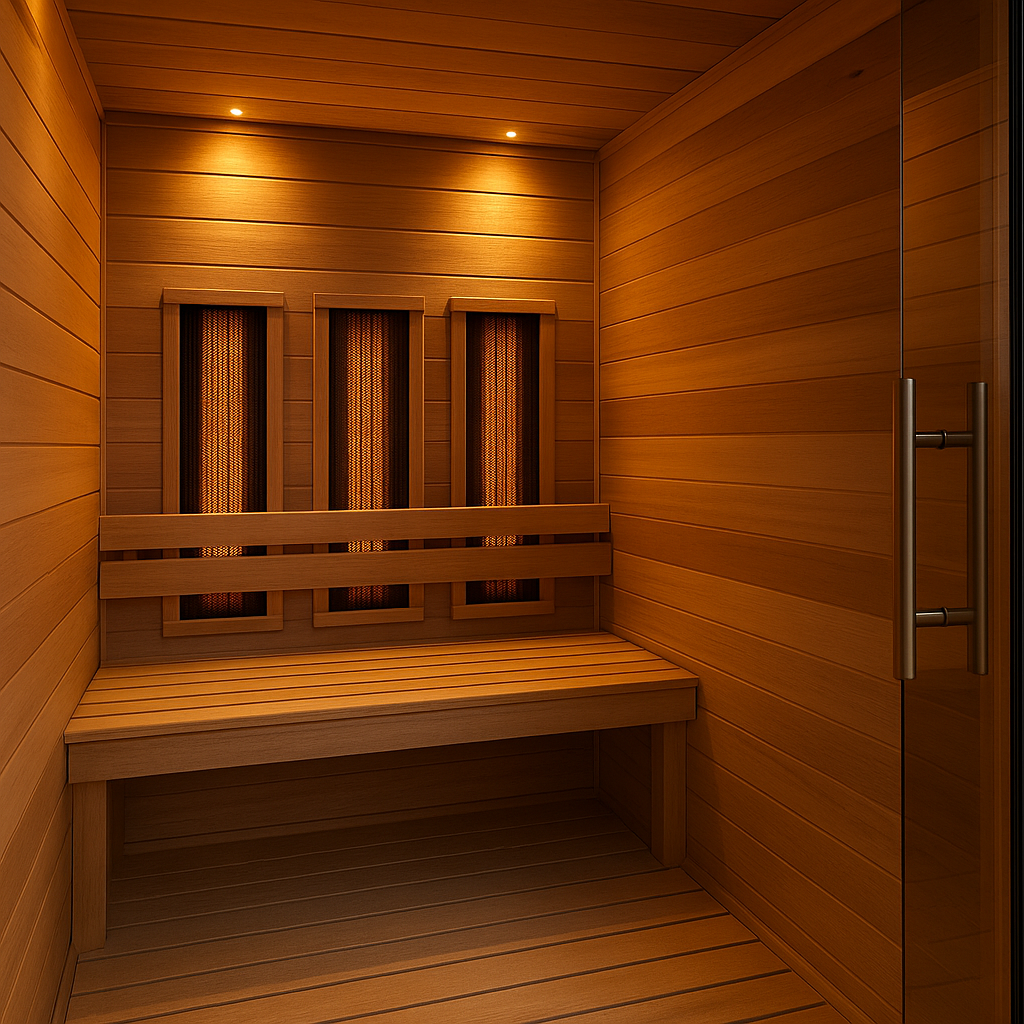


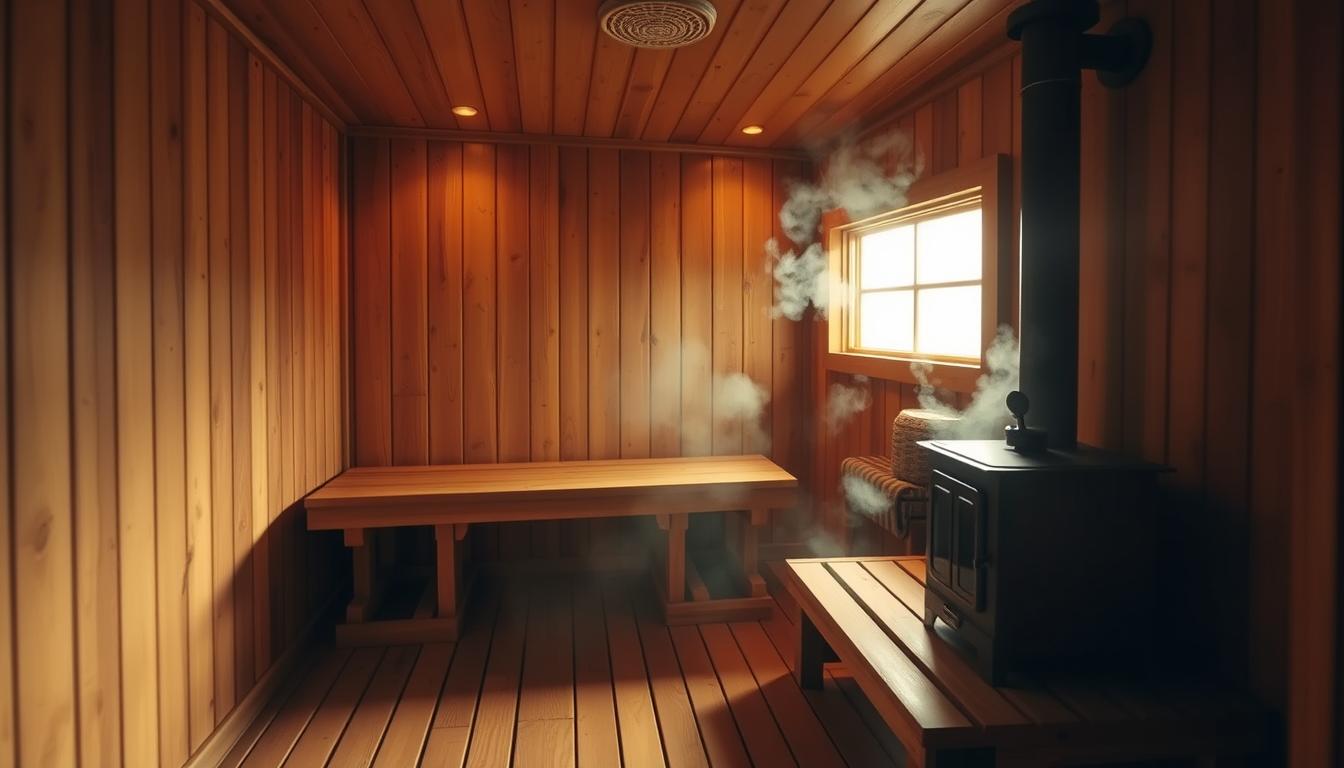
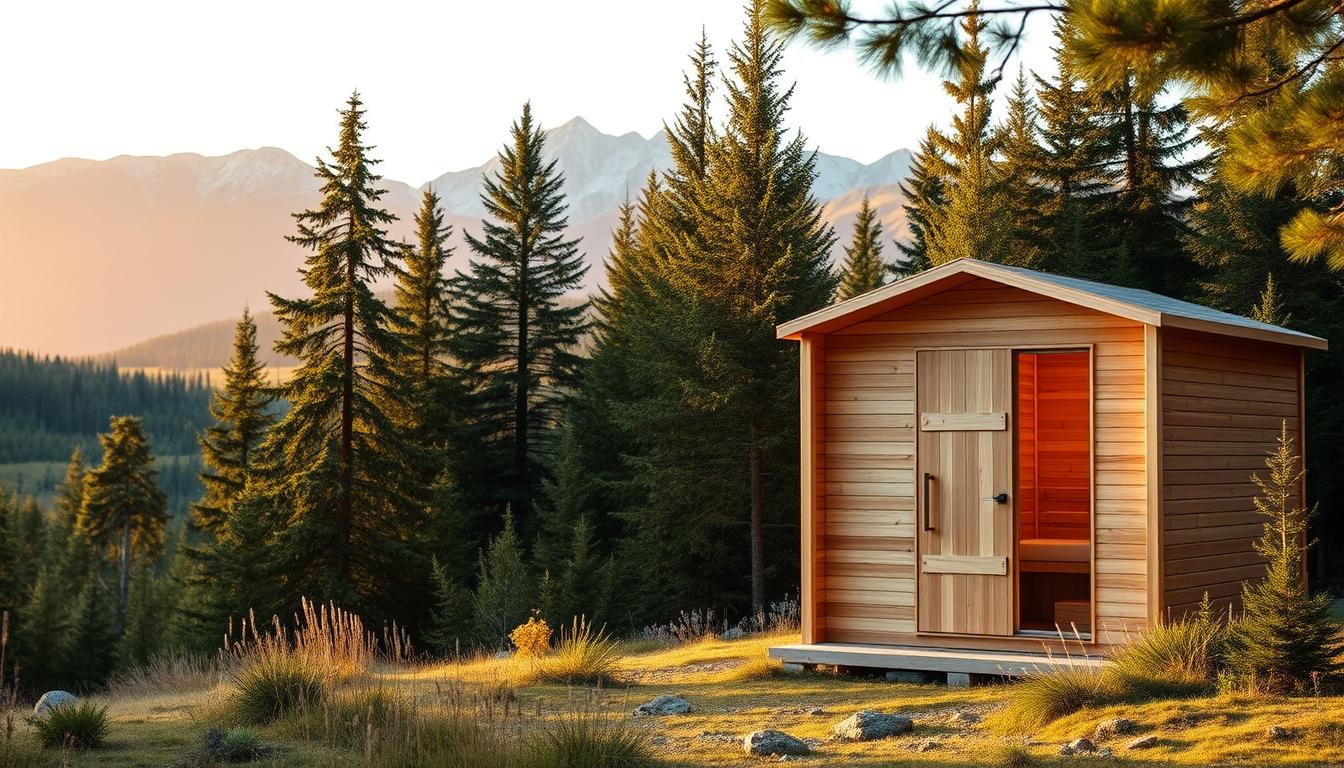
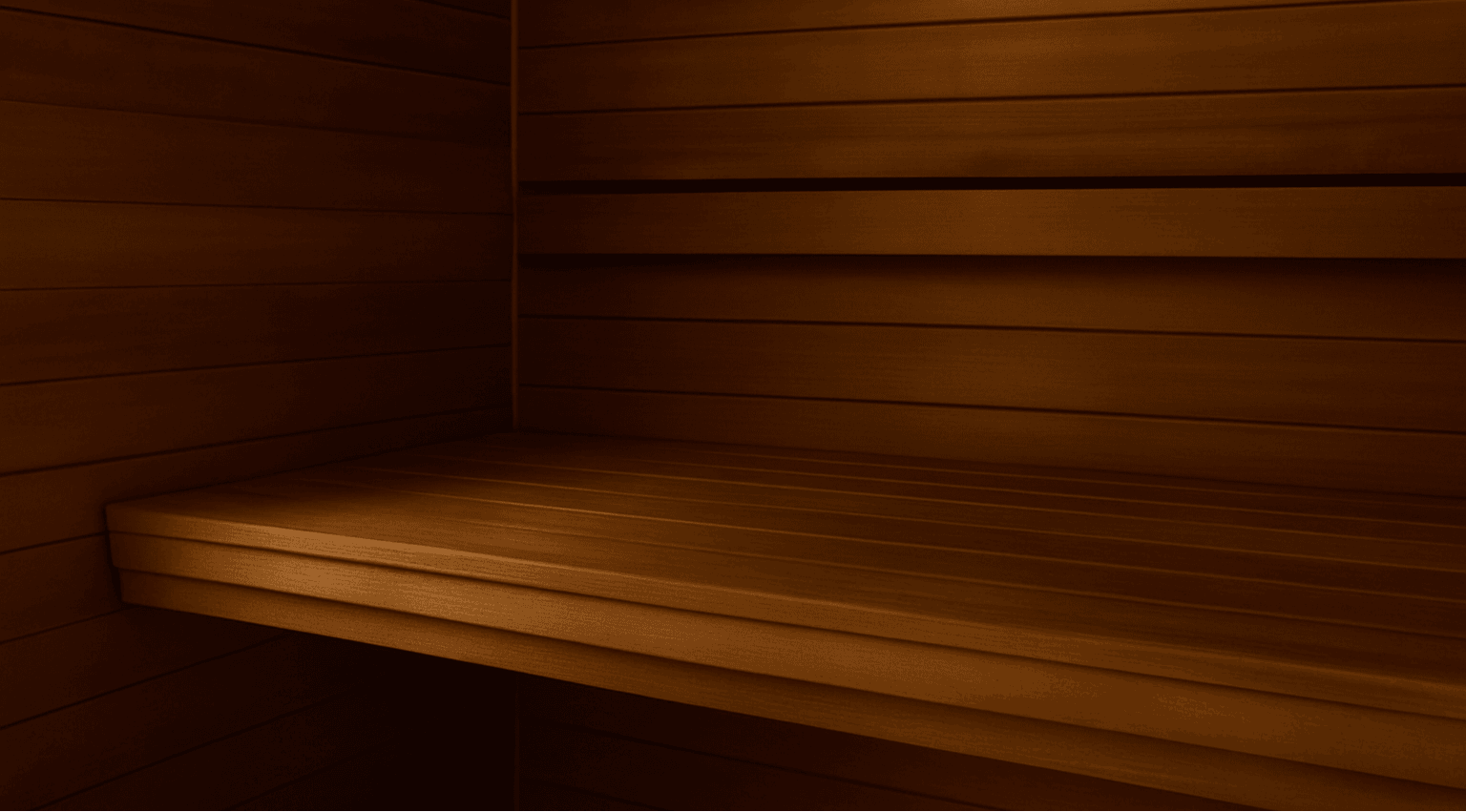
Leave a comment
This site is protected by hCaptcha and the hCaptcha Privacy Policy and Terms of Service apply.